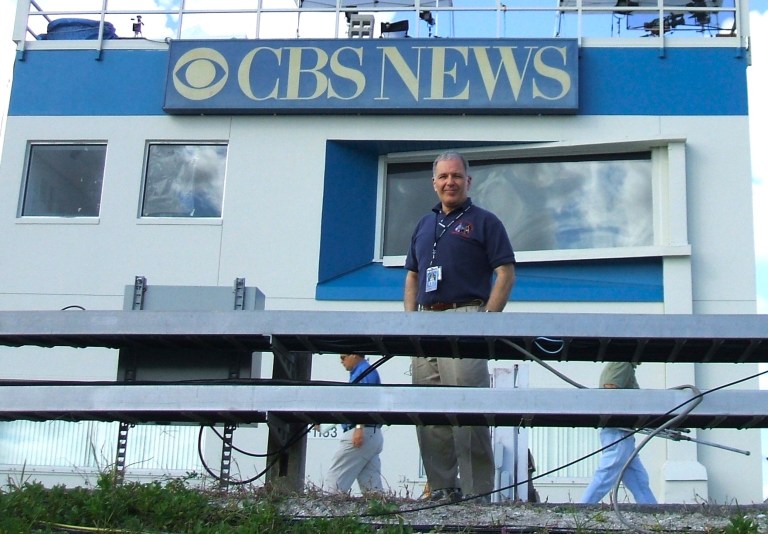
Mark Kramer
Producer, CBS News
Mark Kramer worked for CBS News for 48 years, covering a wide variety of stories that took him around the globe. An Emmy Award winning producer, he followed three Popes and six presidents to over 60 countries on six continents, as well as producing coverage of political primaries, conventions, elections, inaugurations and breaking news.
As the Special Events Operations producer, he worked on hundreds of special reports, ranging from earthquakes and hurricanes, to the U.S. invasions of Grenada and Haiti, the funeral of the emperor of Japan, the Gulf Wars, the handover of Hong Kong, and the terrorist attacks on the United States on Sept. 11, 2001.
But through all that, his favorite beat remained the space story. As the CBS News space producer, Kramer covered over 125 flights, including all the crewed Apollo missions, Skylab, Apollo-Soyuz (from Moscow), and witnessed 87 space shuttle launches. He flew twice on NASA’s zero-G aircraft with astronauts training for shuttle flights, spending almost an hour weightless. In the course of those assignments, he traveled to the Kennedy Space Center more than 175 times. Working alongside local architects in 1988, he helped design the CBS News building there.
A great deal of his work covering events non-astronautical was done as the TV pool producer, representing all of the American networks. He made many trips overseas with White House advisors to see in advance which sites the president might visit. It did not always go smoothly. There were confrontations with armed guards, foreign officials who demanded bribes, and a one-hour argument with a Philippine general who broke a promise about coverage rules.
An aviation buff, Kramer was delighted to fly onto the aircraft carrier USS Forrestal in the Mediterranean in 1989 to work out how the pool camera crew would cover President George H. W. Bush’s visit there. He said afterwards that being catapulted off at day’s end was an unforgettable experience.
In 1982, at the end of President Reagan’s visit to Central and South America, Kramer was sitting in the jump seat of a four-network charter plane in Brasilia. As the Boeing 707 took off, it hit a tower, shearing off the left landing gear. After dumping fuel, the plane came back for a hair-raising landing that knocked two engines off the wings and bent the fuselage. Everyone walked away, and Kramer later said it was the scariest moment in his life.
For Kramer, covering human spaceflight was thrilling from the moment in 1968 when he arrived at NASA’s Manned Spacecraft Center in Houston as a green 22-year-old covering Apollo 7, right through the landing of STS-135, 43 years later.
Retiring in 2006, Kramer continued to work for CBS News as a free-lancer for eight years, devoting most of that time to covering the end of the shuttle program and Soyuz flights to and from the international space station.
As someone fascinated with space from early childhood, Kramer always said his career was nothing less than a dream come true.


























